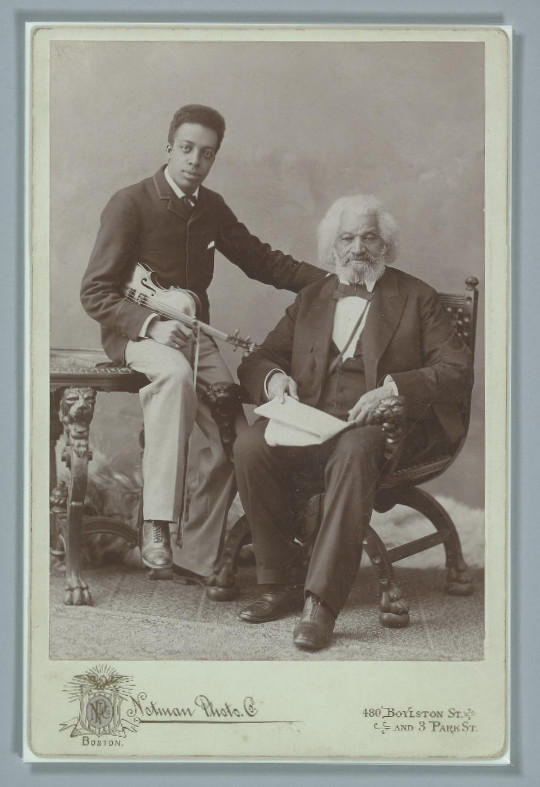Today we’re visiting a photograph from 1894, a cabinet card family photo showing Frederick Douglass and his grandson, Joseph Douglass. It comes from the National Museum of African American History and Culture.

In this series we introduce a photo, talk about why it works photographically, and
take a look at the context behind the creation. It’s also Black History
Month—African-American History Month in the
United States. To celebrate, we’re
featuring public domain photos from archives and image libraries
with collections
relating to the lives and culture of African-Americans and people of
African descent.
In This Image
In this studio photograph is Frederick Douglass, American author, orator, publisher, and abolitionist, and his grandson, Joseph Douglass. Frederick Douglass is on the right side of the image, sitting
in a chair holding a folded newspaper. Joseph Douglass sits on the edge of a table at
the left side of the image, a violin tucked under his arm. His right hand gingerly holds the bow in two fingers, suspended. His left hand rests on the back of his
grandfather’s chair. The furniture is made of wood, with curved legs and carved details. Their suits are crisp. They look directly into the camera.
Reading the Rebate
What we would today call a large format image, this picture was taken with a big, slow studio camera.
The bottom of the card has a maker’s mark and address: the
Notman Photographic Company in Boston. This Canadian-owned studio was, for a time, one of the largest portrait companies in the Northeastern United States.
This carte-de-visite is part of the Charlene Hodges Byrd
Collection, which documents the life and
career of Charlene Hodges Byrd, including correspondence, ephemera and
photographs discussing family life, religion, race, education as well as
the family relationship with Frederick Douglass and his family.
Reading the Image
Graphically, there’s a lot to love in the composition. It’s a simple
staging, but the combination of dark suits and furniture on a light
background creates numerous pleasing negative shapes and textures. I like the tension between crisp suits and pants and curved furnishings. I like that they are holding symbolic objects: a newspaper
(Douglass was a publisher) and a violin.
The older Douglass was wonderfully photograph-able at all ages. What strikes me about this image, though, is how the way the two men relate to each other. I love their body language, the relaxed-but-present posture and affectionate arrangement toward one another.
More About Frederick Douglass
Want to learn more about Frederick Douglass? Check out these resources: